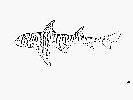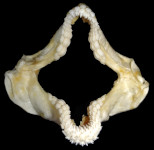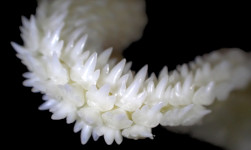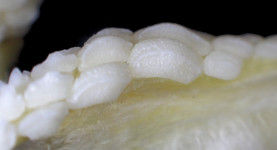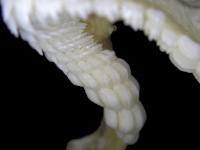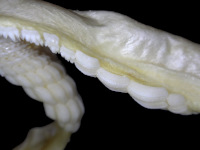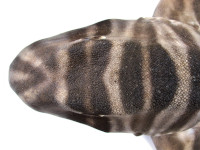Heterodontus zebra
(Gray, 1831)
Zebra bullhead shark
Classification: Elasmobranchii Heterodontiformes Heterodontidae
Reference of the original description
Description of three new species of fish, including two undescribed genera, discovered by John Reeves, Esq., in China. Zoological Miscellany, 1831, 4–5
Description of three new species of fish, including two undescribed genera, discovered by John Reeves, Esq., in China. Zoological Miscellany, 1831, 4–5
Image of the original description
No image in first description.
No image in first description.
Synonyms / new combinations and misspellings
Centracion zebra, Cestracion amboinensis, Cestracion zebra, Heterodontus cf. zebra
Centracion zebra, Cestracion amboinensis, Cestracion zebra, Heterodontus cf. zebra
Types
Heterodontus zebra
Holotype: BMNH: 1953.5.10.4
Cestracion amboinensis
Holotype: BMNH: 1867.11.28.183
Heterodontus zebra
Holotype: BMNH: 1953.5.10.4
Cestracion amboinensis
Holotype: BMNH: 1867.11.28.183
Description :
Citation: Heterodontus zebra (Gray, 1831): In: Database of modern sharks, rays and chimaeras, www.shark-references.com, World Wide Web electronic publication, Version 01/2026
Please send your images of "Heterodontus zebra" to info@shark-references.com
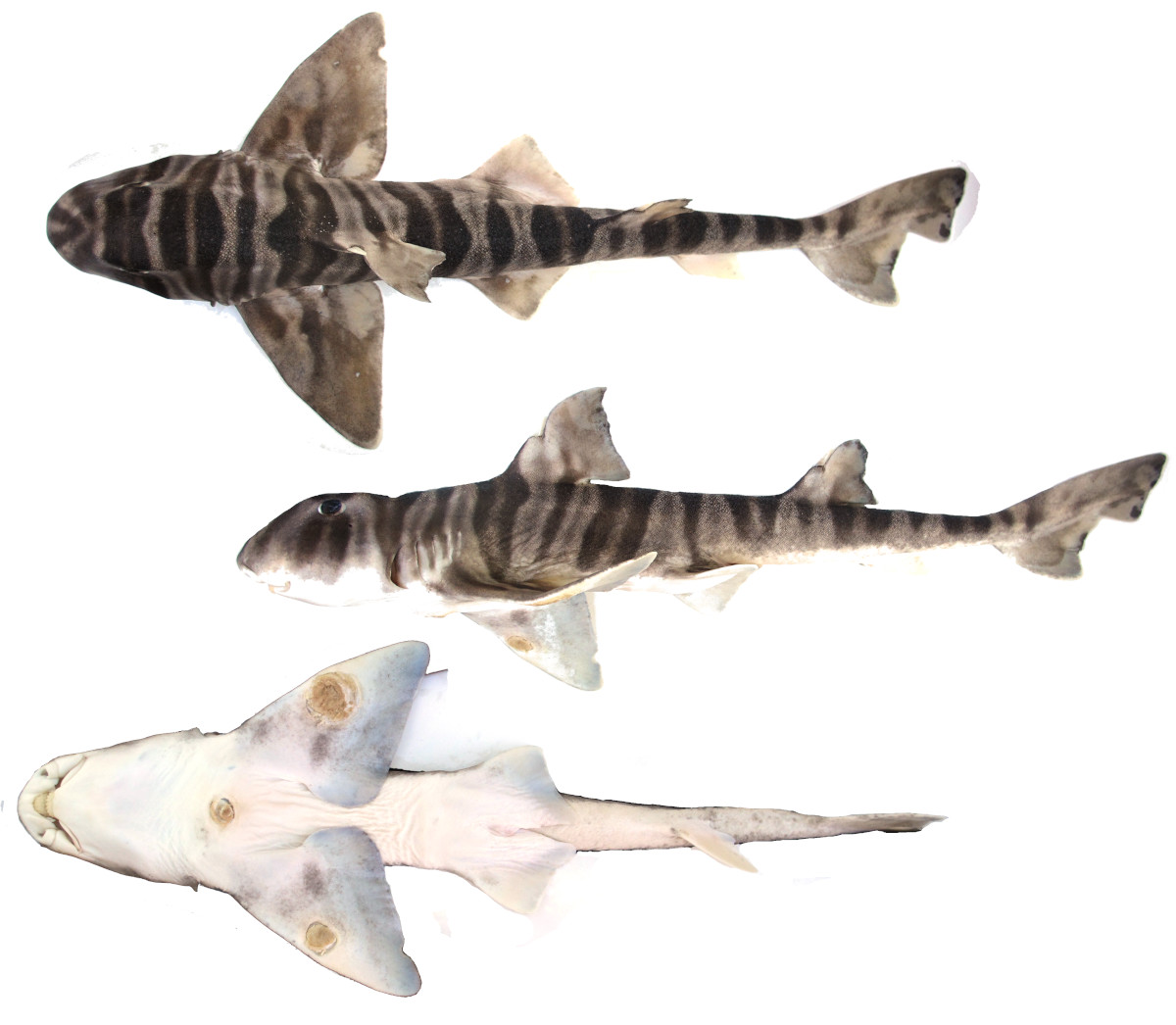
Heterodontus zebra (Gray, 1831) , ERB 1147, female, 77,8 cm TL, Taiwan © Frederik H. Mollen (Elasmobranch Research Belgium)

Heterodontus zebra (Gray, 1831) , ERB 1147, female, 77,8 cm TL, Taiwan © Frederik H. Mollen (Elasmobranch Research Belgium)
Common names
 Dormilón acebrado,
Dormilón acebrado,  Requin dormeur zébré,
Requin dormeur zébré,  Barred bull-head shark,
Barred bull-head shark,  Barred shark,
Barred shark,  Bullhead shark,
Bullhead shark,  Striped bullhead shark,
Striped bullhead shark,  Striped cat shark,
Striped cat shark,  Zebra Port Jackson shark,
Zebra Port Jackson shark,  Zebra bullhead shark,
Zebra bullhead shark,  Zebra horn shark
Zebra horn shark
 Dormilón acebrado,
Dormilón acebrado,  Requin dormeur zébré,
Requin dormeur zébré,  Barred bull-head shark,
Barred bull-head shark,  Barred shark,
Barred shark,  Bullhead shark,
Bullhead shark,  Striped bullhead shark,
Striped bullhead shark,  Striped cat shark,
Striped cat shark,  Zebra Port Jackson shark,
Zebra Port Jackson shark,  Zebra bullhead shark,
Zebra bullhead shark,  Zebra horn shark
Zebra horn shark
Short Description
The Zebra bullhead shark, Heterodontus zebra, has a large blunt head, low supra-orbital crest gradually sloping behind eyes, dorsal fin spines, anal fin, and zebra-pattern of dark, narrow vertical bands on a pale background (Ref. 9838; 6871). As characteristic of members of the family, caudal fin with a moderately long dorsal lobe and moderately long ventral lobe, the latter shorter than the dorsal lobe, vertebral axis raised into caudal-fin lobe (Ref.9838).
The Zebra bullhead shark, Heterodontus zebra, has a large blunt head, low supra-orbital crest gradually sloping behind eyes, dorsal fin spines, anal fin, and zebra-pattern of dark, narrow vertical bands on a pale background (Ref. 9838; 6871). As characteristic of members of the family, caudal fin with a moderately long dorsal lobe and moderately long ventral lobe, the latter shorter than the dorsal lobe, vertebral axis raised into caudal-fin lobe (Ref.9838).
Distribution
Western Pacific: Japan to northwestern Australia [1388] and Queensland. Source: www.gbif.org
Western Pacific: Japan to northwestern Australia [1388] and Queensland. Source: www.gbif.org
Human uses
fisheries: minor commercial; aquarium: potential; price category: not marketed/unknown; price reliability:
fisheries: minor commercial; aquarium: potential; price category: not marketed/unknown; price reliability:
Biology
Oviparous, paired eggs are laid. Embryos feed solely on yolk [733]. Distinct pairing with embrace [17086]. Lays auger type eggs (about 12-18cm, 4.7-7 inches long) among rocks " kelp, often with more than female using same oviposition site, with as many eggs found in a single nest; female lay 2 eggs at a time, from spring to late summer in Japan, 6-12 times during a single spawning season. Eggs hatch in 1 year. Hatch at 18 cm (7 inches), max length at 1.2m (3.9 ft.). During courtship, male grasps pectoral fin of female " wraps posterior part of body under her so single clasper can be inserted into her cloaca. In several mating bouts observed, copulation lasted as long as 15 minutes [1658]. A common but little-known shark found on the continental and insular shelves in depths down to at least 50 m. Probably feeds on bottom invertebrates and small fishes [518]. In Japan, preferably near Nagasaki; inhabits rocky regions [17641]. A carnivore [17641]. Found in temperate waters where it frequents rocky reefs " kelp forests. Feeds on crustaceans, molluscs, small bony fishes, and sea urchins. Some specimens observed with hyrdroids growing in their teeth [1658].
Oviparous, paired eggs are laid. Embryos feed solely on yolk [733]. Distinct pairing with embrace [17086]. Lays auger type eggs (about 12-18cm, 4.7-7 inches long) among rocks " kelp, often with more than female using same oviposition site, with as many eggs found in a single nest; female lay 2 eggs at a time, from spring to late summer in Japan, 6-12 times during a single spawning season. Eggs hatch in 1 year. Hatch at 18 cm (7 inches), max length at 1.2m (3.9 ft.). During courtship, male grasps pectoral fin of female " wraps posterior part of body under her so single clasper can be inserted into her cloaca. In several mating bouts observed, copulation lasted as long as 15 minutes [1658]. A common but little-known shark found on the continental and insular shelves in depths down to at least 50 m. Probably feeds on bottom invertebrates and small fishes [518]. In Japan, preferably near Nagasaki; inhabits rocky regions [17641]. A carnivore [17641]. Found in temperate waters where it frequents rocky reefs " kelp forests. Feeds on crustaceans, molluscs, small bony fishes, and sea urchins. Some specimens observed with hyrdroids growing in their teeth [1658].
Remarks
shark-references Species-ID=2816;
shark-references Species-ID=2816;
Parasites (arranged by Jürgen Pollerspöck)
Cestoda
Cestoda








